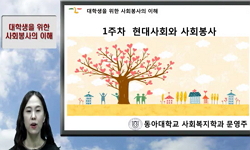The national and local governments in Nepal have grappled with problems of poverty, unemployment, lack of health care, inadequate food supplies and substandard educational institutions. In response to these intense problems, national development agend...
http://chineseinput.net/에서 pinyin(병음)방식으로 중국어를 변환할 수 있습니다.
변환된 중국어를 복사하여 사용하시면 됩니다.
- 中文 을 입력하시려면 zhongwen을 입력하시고 space를누르시면됩니다.
- 北京 을 입력하시려면 beijing을 입력하시고 space를 누르시면 됩니다.

Mobilizing Community Assets in Tikapur, Nepal: Applying Asset-based Community Development Strategy
한글로보기https://www.riss.kr/link?id=A104174597
- 저자
- 발행기관
- 학술지명
- 권호사항
-
발행연도
2014
-
작성언어
English
- 주제어
-
등재정보
KCI등재
-
자료형태
학술저널
-
수록면
227-252(26쪽)
-
KCI 피인용횟수
3
- DOI식별코드
- 제공처
-
0
상세조회 -
0
다운로드
부가정보
다국어 초록 (Multilingual Abstract)
The national and local governments in Nepal have grappled with problems of poverty, unemployment, lack of health care, inadequate food supplies and substandard educational institutions. In response to these intense problems, national development agendas have tended to experiment with various top-down plans in cooperation with international organizations. Tikapur, the most well-planned city in western Nepal, has become the site of several development projects following such top-down approach. Recently, however, local and regional communities have been asked to play a front-line role in mobilizing human resource, public institutions, and space assets to help establish economic and social development initiatives from the bottom-up. This "Asset-based community development" approach emphasizes that development depends on finding and mobilizing hidden and under-utilized capabilities and assets already on the ground to discover sustainable development. This paper argues that this approach is applicable to the developing countries due to their significantly larger proportion of underdeveloped places and institutions. In this sense, the authors analyze the degree of utilization of local assets and the relationship between socioeconomic status and asset utilization based on empirical data collected in the Tikapur region of Nepal. The findings reveal statistically significant relationships between the utilization of community assets such as bank and cooperative, and income group. Based on the findings from a questionnaire survey, this paper offers recommendations for greater sustainable community development in Nepal.
참고문헌 (Reference)
1 "World Bank"
2 Robeyns, I., "Valuing Freedoms: Sen's Capability Approach and Poverty Reduction, SABINA ALKIRE. Oxford University Press, 2002, vii+ 340 pages" 19 (19): 371-377, 2003
3 Shrestha, B. R., "Understanding and Piloting Alternative Approaches in Nepal: A Case Study of Practical Action's Swashtha Project" 2010
4 Ssewamala, F. M., "The potential of asset‐based development strategies for poverty alleviation in Sub‐Saharan Africa" 19 (19): 433-443, 2010
5 Romer, P., "The Origins of Endogenous Growth" 8 (8): 3-22, 1994
6 Clark, D. A., "Sen's capability approach and the many spaces of human well-being" 41 (41): 1339-1368, 2005
7 Fadare, S., "Recent Banking Sector Reforms and Economic Growth in Nigeria" 8 : 146-160, 2010
8 USAID, "Rapid assessment report on community development infrastructure in eight districts of mid-and far western Nepal"
9 Sharma, S. R., "Nepal: Transition to Transformation" Human and Natural Resources Studies Center, Kathmandu University and South Asia Regional Coordination Office of NCCR North-South 49-75, 2008
10 Karan, P. P., "Nepal: A Himalayan Kingdom in Transition" Bookwell Publication 1996
1 "World Bank"
2 Robeyns, I., "Valuing Freedoms: Sen's Capability Approach and Poverty Reduction, SABINA ALKIRE. Oxford University Press, 2002, vii+ 340 pages" 19 (19): 371-377, 2003
3 Shrestha, B. R., "Understanding and Piloting Alternative Approaches in Nepal: A Case Study of Practical Action's Swashtha Project" 2010
4 Ssewamala, F. M., "The potential of asset‐based development strategies for poverty alleviation in Sub‐Saharan Africa" 19 (19): 433-443, 2010
5 Romer, P., "The Origins of Endogenous Growth" 8 (8): 3-22, 1994
6 Clark, D. A., "Sen's capability approach and the many spaces of human well-being" 41 (41): 1339-1368, 2005
7 Fadare, S., "Recent Banking Sector Reforms and Economic Growth in Nigeria" 8 : 146-160, 2010
8 USAID, "Rapid assessment report on community development infrastructure in eight districts of mid-and far western Nepal"
9 Sharma, S. R., "Nepal: Transition to Transformation" Human and Natural Resources Studies Center, Kathmandu University and South Asia Regional Coordination Office of NCCR North-South 49-75, 2008
10 Karan, P. P., "Nepal: A Himalayan Kingdom in Transition" Bookwell Publication 1996
11 Hachhethu, K., "Nepal in Transition: A Study on the State of Democracy" International Institute for Democracy and Electoral Assistance 2008
12 Central Bureau of Statistics, "National population and housing census Kailali"
13 Central Bureau of Statistics, "National Population and housing census"
14 Devkota, K. L., "Local Governance and Community Development Programme: A Brief Overview of Minimum Conditions and Performance Measures of Local Bodies of Nepal, Government of Nepal Ministry of Local Development"
15 Mehta, J. N., "Local Attitudes toward Community-based Conservation Policy and Prorammes in Nepal: A Case Study in the Makalu-Barun Conservation Area" 25 (25): 320-333, 1998
16 Mosley, P., "Lending to the Poorest: Early Lessons from the Small Farmers' Development Programme, Nepal" 3 (3): 193-207, 1985
17 Central Bureau of Statistics, "Kailali District Profile"
18 Pigg, S. L., "Investing Social Categories through Place: Social Representations and Development in Nepal" 34 (34): 491-513, 1992
19 United Nations Development Programme, "Human Development Reports"
20 Mathie, A., "From clients to citizens: Asset-based community development as a strategy for community-driven development" 13 (13): 474-486, 2003
21 Ennis, G., "Exploring the potential of social network analysis in asset-based community development practice and research" 63 (63): 404-417, 2010
22 Acharya, S., "Empowering Rural Women through a Community Development Approach in Nepal" 42 (42): 34-46, 2007
23 Sen, A., "Development as Freedom" Alfred A. Knopf 1999
24 Stone, L., "Cultural Crossroads of Community Participation in Development: A Case from Nepal" 48 (48): 206-213, 1989
25 Mansuri, G., "Community-based and-driven development: A critical review" 19 (19): 1-39, 2004
26 Chhabi, R., "Changing Pattern of Complementary and Alternative Medicine in Tikapur Nepal: A Hope for Future Health" 3 (3): 2014
27 Pan, R. J., "Building healthier communities for children and families: Applying asset-based community development to community pediatrics" 115 (115): 1185-1187, 2005
28 Kretzmann, J. P., "Building communities from the inside out" Northwestern University 1993
동일학술지(권/호) 다른 논문
-
- 한국외국어대학교 인도연구소
- 고태진(Koh, Tae-Jin)
- 2014
- KCI등재
-
- 한국외국어대학교 인도연구소
- 김경학(Kim, Kyung-Hak)
- 2014
- KCI등재
-
한국과 인도기업의 소유구조와 기업가치 및 성과에 관한 비교 연구
- 한국외국어대학교 인도연구소
- 김우성(Kim, Woo-Sung)
- 2014
- KCI등재
-
- 한국외국어대학교 인도연구소
- 라윤도(Ra, Yoon-Dho)
- 2014
- KCI등재
분석정보
인용정보 인용지수 설명보기
학술지 이력
| 연월일 | 이력구분 | 이력상세 | 등재구분 |
|---|---|---|---|
| 2028 | 평가예정 | 재인증평가 신청대상 (재인증) | |
| 2022-01-01 | 평가 | 등재학술지 유지 (재인증) |  |
| 2019-01-01 | 평가 | 등재학술지 유지 (계속평가) |  |
| 2016-05-13 | 학술지명변경 | 외국어명 : 미등록 -> Journal of South Asian Studies |  |
| 2016-01-01 | 평가 | 등재학술지 선정 (계속평가) |  |
| 2015-12-01 | 평가 | 등재후보로 하락 (기타) |  |
| 2012-12-31 | 학회명변경 | 한글명 : 남아시아연구소 -> 인도연구소영문명 : Institute of South Asian Studies -> Institute of Indian Studies |  |
| 2011-01-01 | 평가 | 등재 1차 FAIL (등재유지) |  |
| 2008-01-01 | 평가 | 등재학술지 선정 (등재후보2차) |  |
| 2007-01-01 | 평가 | 등재후보 1차 PASS (등재후보1차) |  |
| 2006-01-01 | 평가 | 등재후보학술지 유지 (등재후보1차) |  |
| 2004-01-01 | 평가 | 등재후보학술지 선정 (신규평가) |  |
학술지 인용정보
| 기준연도 | WOS-KCI 통합IF(2년) | KCIF(2년) | KCIF(3년) |
|---|---|---|---|
| 2016 | 0.32 | 0.32 | 0.22 |
| KCIF(4년) | KCIF(5년) | 중심성지수(3년) | 즉시성지수 |
| 0.2 | 0.17 | 0.843 | 0.19 |




 KCI
KCI





